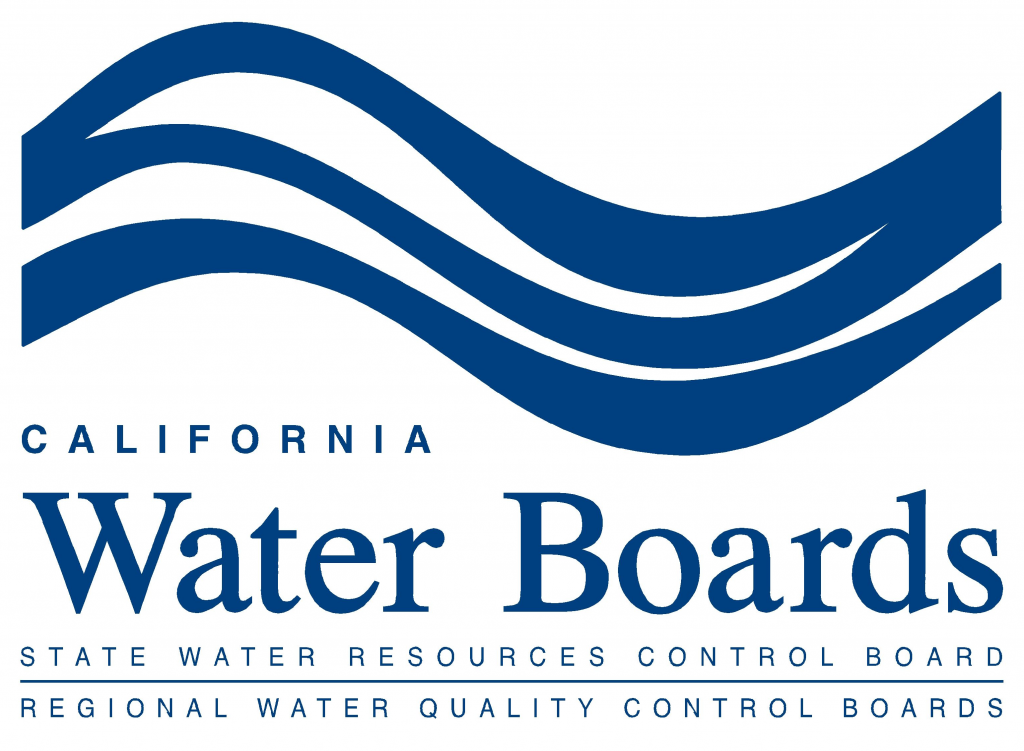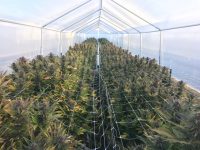Cannabis is the most highly regulated crop in California, and the state just added another layer of regulation. This article breaks down the State Water Resources Control Board’s (SWRCB) recently updated Cannabis Cultivation Policy – Principles and Guidelines for Cannabis Cultivation (“Policy”) into six key takeaways.1 These guidelines impose new rules on cannabis cultivation activities that have the potential to impact a watercourse (stream, creek, river or lake). Most of these rules apply to cultivation of sun-grown cannabis, which is currently allowed in some form in 12 counties. Compliance with these new requirements will be implemented through the CalCannabis Cultivation Licensing Program.
- When developing farmland, hillsides should be avoided and erosion must be controlled.
The Policy provides specific rules for growing pot on undisturbed land. To prevent erosion, numerous limitations are placed on earthmoving and activities in sensitive areas, and cultivators are not allowed to grade hillsides that exceed a 50% slope.2
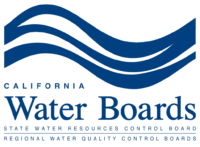 Cultivation prepping activities must minimize grading, dust, soil disturbance, erosion, and impacts on habitat, especially during the winter season.3 No vehicles or heavy equipment may be used within a riparian setback4 or watercourse,5 and cultivators must avoid damaging native riparian vegetation6 and oak woodlands.7 All farm equipment, fuel, and hazardous materials must be carefully stored away from creeks and sensitive habitat.8 The Policy also governs road construction.9
Cultivation prepping activities must minimize grading, dust, soil disturbance, erosion, and impacts on habitat, especially during the winter season.3 No vehicles or heavy equipment may be used within a riparian setback4 or watercourse,5 and cultivators must avoid damaging native riparian vegetation6 and oak woodlands.7 All farm equipment, fuel, and hazardous materials must be carefully stored away from creeks and sensitive habitat.8 The Policy also governs road construction.9
- Cultivators should avoid work in or near a surface waterbody.10
If a cultivator’s activities impact a river, stream, or lake, they must consult with the California Department of Fish and Wildlife (CDFW).11 Cultivators must maintain minimum riparian setbacks for all cannabis activities, including grading and ancillary farm facilities. Before grading land, a biologist must identify any sensitive flora or fauna, and if any is located, consult with CDFW and provide a report to the Regional Board.12 No irrigation runoff, tailwater, chemicals or plant waste can be discharged to a waterbody.13 Diversion facilities for the irrigation of cannabis may not block fish passage, upstream or downstream, and must be fitted with a CDFW-approved fish screen; new facilities are subject to all applicable permits and approvals.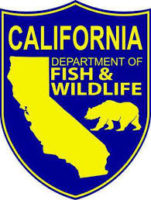
- During the dry season, cultivators may not use surface water.
The use of surface water supplies in California requires a valid water right and the use of water for cannabis cultivation is no different.14 Anyone seeking to appropriate “water flowing in a known and defined channel” or from a watercourse must apply to the SWRCB and obtain a permit or license.15 Alternatively, a landowner whose property is adjacent to a watercourse may have a riparian right to divert the water for use on her land. Riparian users do not need permission from the SWRCB to divert water, but they must report water use annually.16
The biggest obstacle that growers face under this Policy is that they cannot divert anysurface water during the dry season—the growing season (April 1 through Oct. 31). It should be noted:
- The seasonal prohibition of surface water diversion applies regardless of the nature of the water right or what has been historically used to irrigate other crops.
- During the dry period, cultivators may only irrigate using stored water (see no. 5 below) or groundwater.
- It remains to be seen whether a legal challenge will be brought against the state for their draconian prohibitions on irrigating cannabis during the six-month growing season. Because this prohibition applies to all watersheds in California, singles out one low-water use crop, and ignores established water rights, it is overly broad and may constitute a constitutional “taking” of property rights.
- During the wet season, surface water diversions must be monitored closely.
Cannabis-specific restrictions also apply during the wet season. From Nov. 1 to March 31, cultivators must comply with instream flow requirements and check in with the state daily. All surface water diversions for cannabis are subject to “Numeric and Narrative Instream Flow Requirements,” to protect flows needed for fish migration and spawning. To ensure diversions do not adversely impact fish flows, cultivators must also “maintain a minimum bypass of at least 50% of the streamflow.”17,18
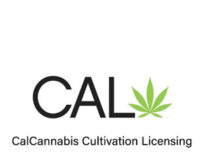 While valid appropriative right holders may divert more than 10 gal./min. for cannabis irrigation during the wet season, riparian right holders are not allowed to exceed that diversion rate.19 All cultivators (including small diverters <10 acre-feet (“AF”)/yr) are required to employ water-saving irrigation methods, install measuring devices to track diversions daily, and maintain records on-site for at least five years.20 Cultivators must inspect and repair their water delivery system for leaks monthly,21 and inspect sprinklers and mainlines weekly to prevent runoff.22
While valid appropriative right holders may divert more than 10 gal./min. for cannabis irrigation during the wet season, riparian right holders are not allowed to exceed that diversion rate.19 All cultivators (including small diverters <10 acre-feet (“AF”)/yr) are required to employ water-saving irrigation methods, install measuring devices to track diversions daily, and maintain records on-site for at least five years.20 Cultivators must inspect and repair their water delivery system for leaks monthly,21 and inspect sprinklers and mainlines weekly to prevent runoff.22
- Cannabis cultivators may obtain a new water storage right for use during the dry season.
To address dry season irrigation limitations, cultivators are urged to store water offstream during the wet season, including rainwater, for dry season use. Growers may not rely on onstreamstorage reservoirs, except if they have an existing permitted reservoir in place prior to Oct. 31, 2017.23 Alternatively, small growers (storage is capped at 6.6 AF/yr) may benefit from the new Cannabis SIUR Program, an expedited process for cultivators who divert from a surface water source to develop and install storage offstream. Only diverters with a valid water right that allows for diversion to storage between Nov. 1 and March 31 qualify.
- Groundwater is less regulated, but cultivators should avoid drilling or using wells near waterbodies.
Groundwater is generally the recommended water supply for cannabis because, unlike surface water, it may be used during the dry season and is not subject to many of the restrictions listed above. It should be noted however:
- Many groundwater basins are now governed by California’s Sustainable Groundwater Management Act (“SGMA”), which requires water agencies to halt overdraft and restore balanced levels of groundwater pumping from certain basins. Thus, SGMA may result in future pumping cutbacks or pumping assessments.
- In some counties, moratoriums and restrictions on drilling new wells are on the rise.
- Under this Policy, the state may step in to restrict groundwater pumping in the dry season in watersheds where there are large numbers of cannabis groundwater, wells located close to streams, and areas of high surface water-groundwater connectivity.24
In short, groundwater pumpers are at risk of cutback if the state deems it necessary to maintain nearby creek flows.Noncompliance can bring lofty fines, revocation of a grower’s cultivation license, or prosecution
Final Takeaways
This cannabis policy presents one of California’s most complex regulatory schemes to date. Before investing in a property, one must understand this Policy and have a robust understanding of the water rights and hydrology associated with the cultivation site. Growers looking to reduce permitting time and costs should invest in relatively flat, historically cultivated land with existing wells and ample groundwater supplies, or alternatively, grow indoors.
This article attempts to synthesize the maze of water supply and water quality regulations that make compliance exceedingly difficult; more detailed information can be found here. Noncompliance can bring lofty fines, revocation of a grower’s cultivation license, or prosecution. Growers are encouraged to contact a hydrologist and water lawyer before making major investments and to designate a water compliance officer to monitor and track all water diversions and water used for irrigation. Growers should also consult with their local jurisdiction regarding water use restrictions and stream setbacks before moving any dirt or planting cannabis.
References
- The Policy is available at: https://www.waterboards.ca.gov/water_issues/programs/cannabis/cannabis_policy.html (will go into effect on or before April 16, 2019.)
- Policy, Appendix A, Section 2, Term 4. The Policy defines “Qualified Professional” as a: California-Licensed Professional Geologist, including Certified Hydrogeologist and Certified Engineering Geologist, California-Licensed Geotechnical Engineer, and Professional Hydrologist. (Policy, Definition 72, p. 11.)
- Policy, Appendix A, Section 2, Terms 4 and 10.
- Policy, Appendix A, Section 2, Term 3.
- Policy, Appendix A, Section 2, Term 40.
- Policy, Appendix A, Section 2, Term 33.
- Policy, Appendix A, Section 2, Term 34.
- Policy, Appendix A, Section 2, Term 7.
- Policy, Appendix A, Section 2, Terms 15 to 29.
- Policy, Appendix A, Section 1, Term No. 41.
- Policy, Appendix A, Section 1, Term No. 3; see also 1602.
- Policy, Appendix A, Section 1, Term No. 10.
- Policy, Appendix A, Section 1, Term No. 326.
- Policy, Appendix A, Section 2, Term 69.
- Wat. Code §1225; See alsoWat. Code §1201 [providing that the state shall have jurisdiction over, “[a]ll water flowing in any natural channel” except water that is appropriated or being used for beneficial purpose upon land riparian to the channel.”]
- Wat. Code §§ 5100–02.
- Policy, p. 12.
- Policy, Attachment A, pp. 60, 63.
- Policy, Section 2, Term 78.
- Policy, Section 2, Term 82.
- Policy, Section 2, Term 95.
- Policy, Section 2, Term 99.
- Policy, Section 2, Term 79.
- Policy, p. 11.

